Thursday, 9:00am
29 December 2016
Moments captured
Edward Ardizzone, Artist and Illustrator
By Alan Powers, Lund Humphries, £40Ardizzone: A Retrospective
The House of Illustration, 2 Granary Square, King’s Cross, London N1C 4BH, UK, 23 September 2016-22 January 2017Edward Ardizzone’s humanity comes to the fore in a new monograph, and a retrospective at London’s House of Illustration. Review by Clare Walters
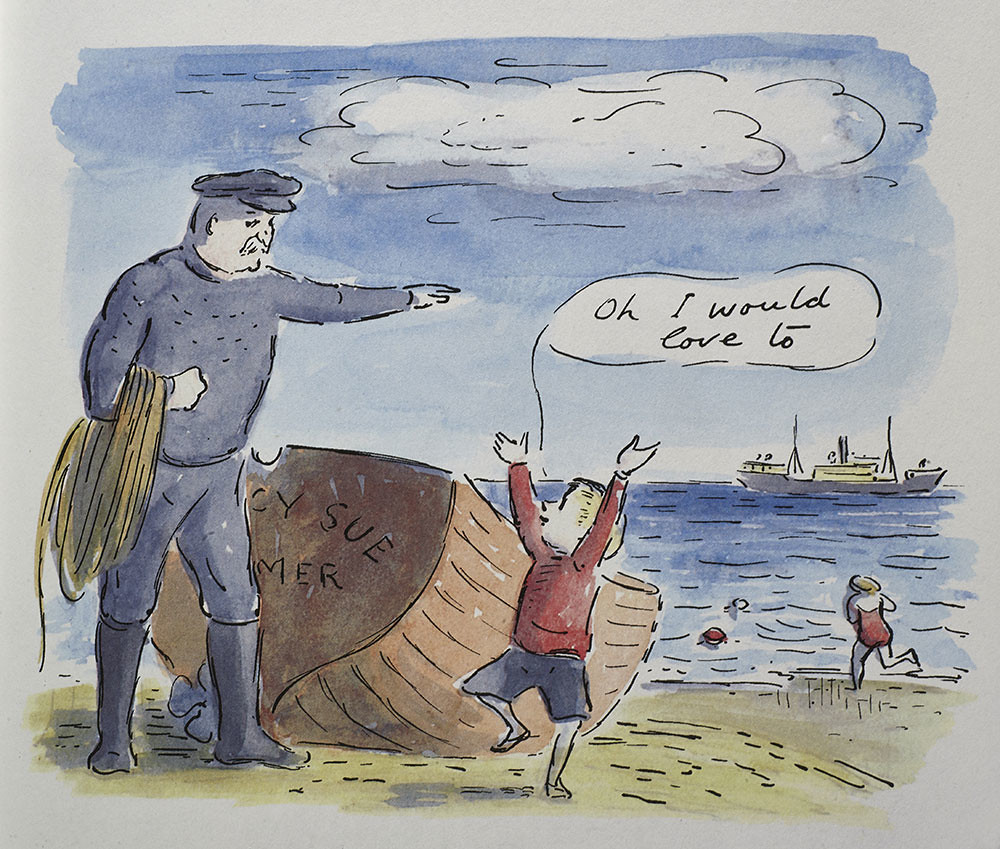
Edward Ardizzone (1900-79) was one of the foremost and most prolific artists of mid-twentieth century Britain, writes Clare Walters. His contemporaries included Edward Bawden, Pearl Binder, Eric Ravilious and John Piper – the latter two of whom were, like Ardizzone, official war artists during the Second World War.
Shelter scenes, Tilbury. © Estate of Edward Ardizzone.
Top: Little Tim and the Brave Sea Captain © Estate of Edward Ardizzone.
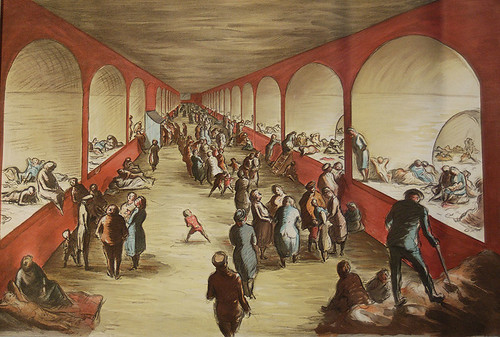
Unlike his contemporaries, Ardizzone is typically remembered for his children’s book illustrations. These include Clive King’s Stig of the Dump, C. Day Lewis’ The Otterbury Incident, Walter de la Mare’s ‘book of rhymes’ Peacock Pie and, in particular, his own ‘Little Tim’ series. This series has remained popular since 1936 when the first title, Little Tim and the Brave Sea Captain, was originally published.
Illustration from Little Tim and the Brave Sea Captain. Reproduced by permission of Frances Lincoln Ltd.
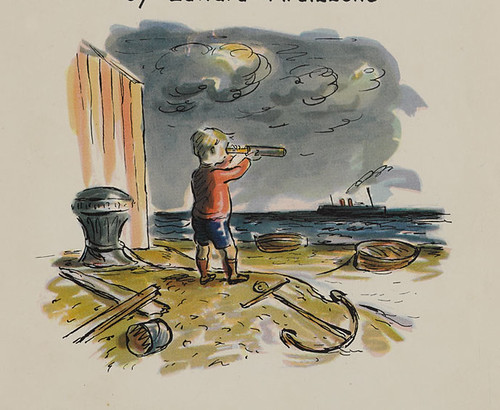
However, much of Ardizzone’s other work is less well known. His career began in the late 1920s with dust jacket illustrations – often signed with the initials EJIA – for grown-up fiction. Several of these are in the exhibition ‘Ardizzone: A Retrospective’ at London’s House of Illustration – the first major show of his work in 40 years. Later, Ardizzone illustrated the work of nineteenth-century novelists including Charles Dickens, Anthony Trollope, William Makepeace Thackeray and Mark Twain, as well as books by twentieth-century writers such as Graham Greene and Dylan Thomas.
The Model (Lithograph). © Estate of Edward Ardizzone.
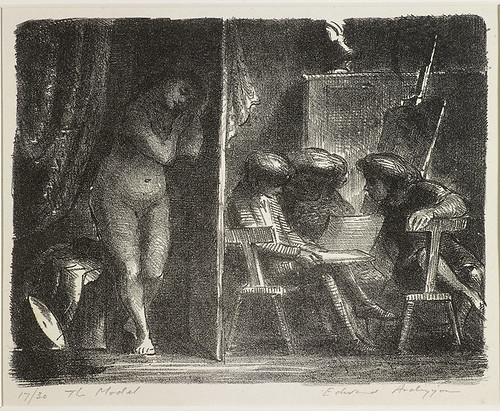
Powers’ Edward Ardizzone, Artist and Illustrator reveals not only the extent of Ardizzone’s book illustration but also the breadth and variety of work he completed in other areas. In the chapter ‘Beyond the Book’ he highlights the non-book work undertaken by Ardizzone, including illustrations for magazines such as Punch, The Radio Times, The Strand and The Listener, and press advertisements for Shell and Monotype. He painted a vast mural – displayed across one whole wall in the exhibition – for the 1960 P&O liner, the SS Canberra, as well as film posters and brochures for Ealing Studios, menu covers for Overton’s (see Eye 87), and telegrams for the General Post Office. One fascinating exhibit is a note from art historian Kenneth Clark who, despite having received in excess of 50 Ardizzone-designed telegrams on his 70th birthday, praised his work highly, saying, ‘The oftener I look at them the more delighted I am by the invention, the humanity and the flowing composition, and in general the sweet picture of life that you have created.’
Mural for the 1960 P&O liner, the SS Canberra, on display at The House of Illustration. Installation photograph by Paul Grover.
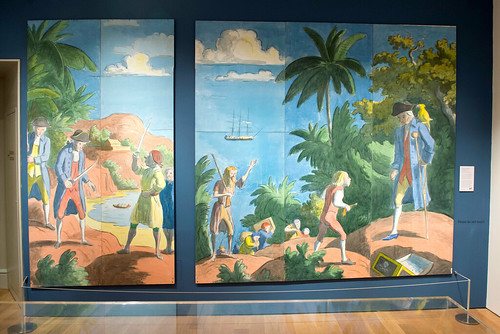
‘Guinness for Strength’, 1954. © Estate of Edward Ardizzone.
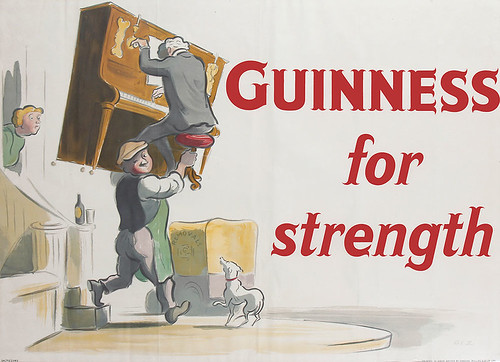
Installation photograph by Paul Grover showing book jackets by Ardizzone, including Eleanor Farjeon’s The Little Bookroom, which features the illustrator’s glass-fronted bookcase.
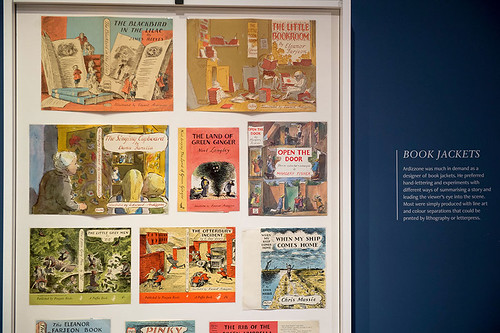
For more than 50 years Ardizzone lived at 130 Elgin Avenue in London, and the home page of his website shows a self-portrait in his studio there. In it, he is standing with his head bowed and absorbed in a book, in front of large, open, glass-fronted bookcase. This bookcase features in several Ardizzone illustrations, including the back cover of The Little Bookroom by Eleanor Farjeon, which won the Carnegie Medal in 1955. I still have my original copy of this much loved story collection so, for me, one of the highlights of the exhibition was seeing the actual bookcase. Here, in addition to books, it displays some of Ardizzone’s decorated plates, ceramic figurines, and toy theatre sets.
Bookcase from Ardizzone’s home studio in London, on display at the House of Illustration. Installation photograph by Paul Grover.
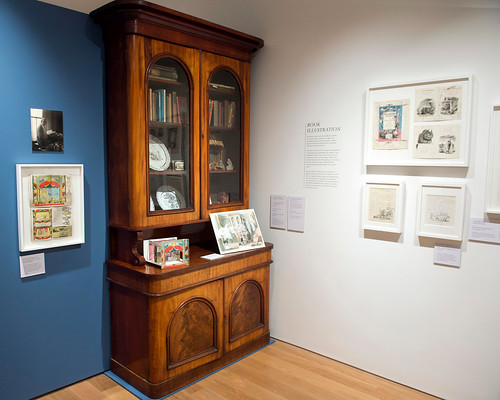
During the Second World War, Ardizzone made more than 400 pictures for the War Artists Advisory Committee (WAAC), and these war works are some of the most moving in the exhibition. The large four-colour lithograph of a railway-vault shelter in Stepney, with people slumped against walls or leaning wearily against each other, has an almost hypnotic power to draw in the viewer with its deep perspective. While his On the Road to Tripoli: A Cup of Tea for the Burial Party, which shows soldiers stopping briefly for a hot drink during the gruesome task of digging graves, still has the power to shock. The three living men echo the three dead ones they are burying and, while the soldiers may appear relaxed and almost nonchalant, the tilt of their heads and the line of their gaze suggests otherwise, possibly indicating silent thoughts of ‘There, but for the grace of God …’. It is almost like a camera snapshot, but with greater emotional depth and poignancy.
On the Road to Tripoli: A Cup of Tea for the Burial Party, 1943. © IWM [Imperial War Museum]
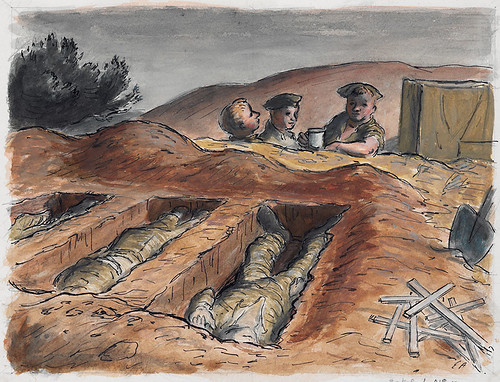
Ardizzone observed and recorded human nature with clarity, warmth and plenty of affectionate humour, from his 1930s drawings of barmaids serving drinks, men with pints in a pub, prostitutes plying their trade, nannies chatting in a park to a furious lady arguing hands-on-hips with a bus conductor, and the lively, curious, cheeky children of his picturebooks,
As well as his drawing and compositional skill, it is this sharp yet sympathetic mix that makes the work so effective. The clothes and settings may seem old-fashioned to a modern audience, but the subjects – their lives and their emotions – still leap from the pictures as real people.
Public Bar at the Royal Albert, ca. 1935. © Estate of Edward Ardizzone.
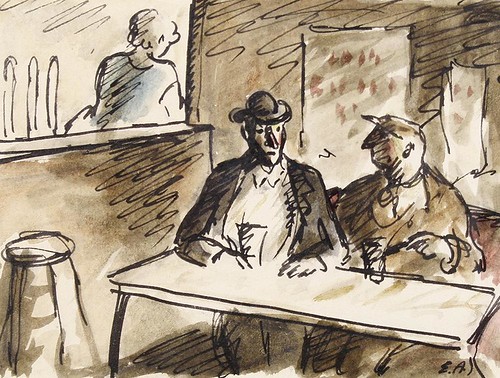
Clare Walters, journalist, author of children’s picturebooks, London
Note: A longer version of this review was first published in the Children’s Books History Society Newsletter No. 116, and we are grateful for their permission to reuse it.
Eye is the world’s most beautiful and collectable graphic design journal, published quarterly for professional designers, students and anyone interested in critical, informed writing about graphic design and visual culture. It is available from all good design bookshops and online at the Eye shop, where you can buy subscriptions and single issues.
